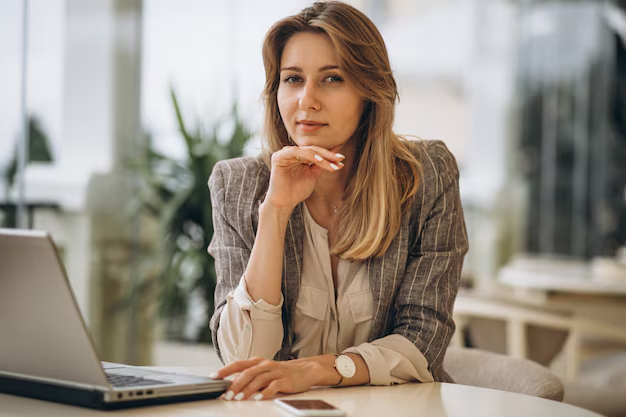Ever found yourself in a sticky situation with blood on your favorite kicks? Don’t sweat it! Whether you’re dealing with a minor scrape or a more serious mishap, knowing how to get blood out of shoes can save your footwear from ruin. In this comprehensive guide, we’ll walk you through five tried-and-true methods to efficiently remove blood stains from various types of shoes. Let’s dive in and get those shoes looking pristine again!
Introduction: When Blood Meets Shoe
Blood stains on shoes can happen in the blink of an eye. Maybe you nicked yourself while shaving, or perhaps you had a run-in with a sharp object. Whatever the cause, the sight of blood on your beloved shoes can be panic-inducing. But fear not! With the right techniques, you can tackle this challenge head-on.
Why quick action matters:
- Blood stains set quickly
- Fresh stains are easier to remove
- Prompt cleaning prevents permanent damage
Let’s explore the science behind blood stains and why they’re such tough customers before we jump into our cleaning arsenal.
Understanding Blood Stains: The Enemy of Clean Shoes
Blood isn’t just any old stain. Its unique composition makes it particularly tricky to remove, especially once it’s had time to set.
The Science of Sticky Red
Blood contains several components that contribute to its staining power:
- Hemoglobin: The iron-rich protein that gives blood its red color
- Plasma: The liquid portion that helps blood coagulate
- White blood cells: These can leave behind proteins that bind to fabric
When blood hits your shoes, it begins to oxidize and bind with the material. The longer it sits, the harder it becomes to remove.
Different Shoe Materials, Different Challenges
| Shoe Material | Stain Absorption | Cleaning Difficulty |
| Canvas | High | Moderate |
| Leather | Moderate | High |
| Suede | Very High | Very High |
| Synthetic | Low | Low to Moderate |
Each material presents unique challenges. Canvas soaks up blood quickly but can handle more aggressive cleaning. Leather and suede require gentler approaches to avoid damage.
Now that we understand our foe, let’s arm ourselves with the tools to defeat it.
Method 1: Cold Water Flush (For Fresh Stains)
When you spot blood on your shoes, your first line of defense is cold water. This method works best on fresh stains before they have a chance to set.
Why Cold Water?
Hot water can actually set the stain by cooking the proteins in blood, making it harder to remove. Cold water, on the other hand, helps to lift the blood without binding it to the fabric.
Step-by-Step Process
- Act fast: The sooner you start, the better your chances of success.
- Remove excess: Use a clean cloth to blot away as much blood as possible.
- Rinse with cold water: Hold the stained area under cold running water.
- Gently rub: Use your fingers to work the water into the stain.
- Repeat: Continue rinsing and rubbing until the water runs clear.
- Dry: Pat the area with a clean towel and air dry.
Pros and Cons
Pros:
- Readily available
- Safe for most shoe materials
- No harsh chemicals needed
Cons:
- Less effective on set stains
- May not remove all traces of blood
Best Shoe Types for Cold Water Method

- Canvas sneakers
- Synthetic athletic shoes
- Water-resistant leather
Pro Tip: For stubborn stains, add a drop of mild dish soap to your cold water rinse. This can help break down the blood proteins more effectively.
Method 2: Hydrogen Peroxide Magic
When cold water alone doesn’t cut it, hydrogen peroxide steps up to the plate. This common household item is a powerhouse for blood stain removal.
The Science Behind the Magic
Hydrogen peroxide (H₂O₂) works by breaking down into water and oxygen when it comes into contact with blood. This reaction causes the blood to foam and lift away from the material.
Application Technique
- Test first: Always test on an inconspicuous area to ensure it won’t discolor your shoes.
- Apply directly: Use a cotton swab or soft cloth to dab hydrogen peroxide onto the stain.
- Let it fizz: Watch as it bubbles and foams, lifting the blood.
- Blot away: Use a clean, damp cloth to blot the area, removing the loosened blood.
- Repeat if necessary: For stubborn stains, you may need to apply multiple times.
Precautions and Tips
- Concentration matters: Use 3% hydrogen peroxide, which is the standard household strength.
- Avoid sunlight: Hydrogen peroxide can bleach some materials when exposed to sunlight.
- Rinse thoroughly: Always rinse the area with clean water after treatment.
Effectiveness on Various Shoe Materials

| Material | Effectiveness | Notes |
| Canvas | Excellent | May lighten dark colors |
| Leather | Good | Test first, can dry out leather |
| Suede | Fair | Use sparingly, can affect texture |
| Synthetic | Very Good | Generally safe and effective |
Case Study: Sarah’s Soccer Mishap
Sarah, a college soccer player, got a bloody nose during a game, staining her white cleats. She immediately rinsed them with cold water when she got home, then followed up with hydrogen peroxide. The stains lifted completely, leaving her cleats game-ready for the next match.
Method 3: Baking Soda Paste for Dried Stains
When you’re dealing with dried blood stains, especially on light-colored or canvas shoes, baking soda can be your secret weapon.
Creating the Paste
Mix baking soda with just enough cold water to form a thick paste. The consistency should be similar to toothpaste.
Application and Dwell Time
- Apply generously: Spread the paste over the stain, ensuring complete coverage.
- Let it sit: Allow the paste to dry completely (about 30 minutes to an hour).
- Scrub gently: Use an old toothbrush to work the dried paste into the stain.
- Rinse clean: Brush off excess paste, then rinse with cold water.
Scrubbing Techniques
- Use circular motions to work the paste into the fabric.
- For tougher stains, add a drop of hydrogen peroxide to the paste for extra lifting power.
Ideal for Canvas and Light-Colored Shoes
Baking soda is particularly effective on porous materials like canvas. It’s also great for white or light-colored shoes where you might be worried about discoloration.
Benefits of baking soda:
- Natural and non-toxic
- Deodorizes as it cleans
- Safe for most fabrics
Pro Tip: For extra stubborn stains, reapply the paste and cover with plastic wrap overnight. The extended dwell time can help break down even the toughest dried blood.
Method 4: White Vinegar Solution
When dealing with delicate materials like suede or when you need a gentler approach, white vinegar can be your go-to solution.
Vinegar’s Stain-Lifting Properties
Vinegar is acidic, which helps to break down the proteins in blood. It’s also effective at neutralizing odors, making it a double-threat against blood stains.
Mixing Ratios and Application
Basic Vinegar Solution:
- 1 part white vinegar
- 2 parts cold water
- Mix the solution: Combine vinegar and water in a small bowl.
- Dab, don’t rub: Use a clean cloth to gently dab the solution onto the stain.
- Let it work: Allow the solution to sit for 5-10 minutes.
- Blot away: Use a clean, damp cloth to blot the area, lifting the stain.
- Rinse: Dab with clean water to remove any vinegar residue.
Dealing with Odors
Vinegar’s strong smell dissipates as it dries, taking any blood odors with it. If the vinegar smell lingers, a quick wipe with a cloth dampened with plain water should do the trick.
Perfect for Delicate Materials
Vinegar is especially useful for suede and other delicate materials that can’t handle harsher cleaning methods.
Suede-specific tips:
- Use a suede brush to restore nap after cleaning
- Allow shoes to dry completely before wearing
- Apply a suede protector spray after cleaning to prevent future stains
Quote: “Vinegar is nature’s cleaning wonder. It’s gentle enough for delicate fabrics but tough enough to tackle blood stains.” – Martha Stewart
Method 5: Enzymatic Cleaners
For those really stubborn, set-in blood stains that resist other methods, enzymatic cleaners can be your ace in the hole.
What Are Enzymatic Cleaners?
Enzymatic cleaners contain specific proteins (enzymes) that break down biological matter like blood, urine, and food stains. They’re often used for pet stains but work wonders on blood as well.
How They Break Down Blood Proteins
These cleaners contain protease enzymes that specifically target and break down proteins found in blood. This makes them incredibly effective, even on old stains.
Application Process
- Choose the right cleaner: Look for products specifically mentioning blood stain removal.
- Test first: Always test on an inconspicuous area to ensure colorfastness.
- Apply directly: Saturate the stain completely with the enzymatic cleaner.
- Let it work: Allow the cleaner to sit for the time specified on the product (usually 10-15 minutes).
- Blot away: Use a clean, damp cloth to blot the area, lifting the broken-down stain.
- Rinse thoroughly: Clean the area with water to remove any residue.
Best for Stubborn, Set-In Stains
Enzymatic cleaners excel where other methods fall short. They’re particularly useful for:
- Old, dried blood stains
- Stains that have been through the wash
- Deep-set stains on porous materials
Table: Enzymatic Cleaner Effectiveness
| Stain Type | Effectiveness | Notes |
| Fresh Blood | Very Good | Works quickly |
| Dried Blood | Excellent | May need longer dwell time |
| Set-In Stains | Outstanding | Often removes stains others can’t |
Case Study: The Vintage Shoe Rescue
Mark found a pair of vintage leather oxfords at a thrift store, but they had old blood stains on the toe. After trying other methods with limited success, he turned to an enzymatic cleaner. After two applications, the decades-old stains disappeared, restoring the shoes to their former glory.
Combination Approaches: When One Method Isn’t Enough
Sometimes, tackling a tough blood stain requires a multi-pronged approach. Here’s how to combine methods effectively for maximum stain-lifting power.
When to Use Multiple Methods
Consider using multiple methods when:
- The stain is particularly stubborn
- You’re dealing with different materials on the same shoe
- Initial attempts with a single method show improvement but don’t completely remove the stain
Order of Application
- Start gentle: Begin with the cold water method for fresh stains.
- Escalate gradually: Move to hydrogen peroxide or vinegar solutions next.
- Bring in the big guns: Use baking soda paste or enzymatic cleaners for resistant stains.
Cautionary Notes
- Always test: When combining methods, test each new product on a small, hidden area.
- Allow drying time: Let the shoe dry completely between different cleaning attempts.
- Be patient: Give each method time to work before moving on to the next.
Pro Tip: For multi-material shoes, use a combination of methods tailored to each part. For example, use vinegar on suede portions and hydrogen peroxide on canvas areas.
Prevention and Quick Response: Staying Ahead of Stains

An ounce of prevention is worth a pound of cure, especially when it comes to blood stains on shoes.
Protective Sprays and Coatings
Invest in quality protective sprays designed for your shoe material:
- For leather: Look for waterproofing and stain-resistant sprays.
- For suede: Use suede-specific protectors that repel liquids.
- For canvas: Water-repellent sprays can buy you crucial time if accidents happen.
Immediate Actions When Blood Hits Your Shoes
- Blot, don’t rub: Use a clean cloth or paper towel to blot excess blood immediately.
- Cold water rinse: If possible, rinse the area with cold water right away.
- Apply salt: In a pinch, table salt can help absorb fresh blood before it sets.
Stain Removal Kit for On-the-Go Emergencies
Put together a small kit to keep in your car or bag:
- Travel-size hydrogen peroxide
- Small pack of salt
- Clean microfiber cloth
- Stain removal wipes
- Small spray bottle with cold water
Being prepared can mean the difference between a minor inconvenience and a ruined pair of shoes.
Aftercare and Restoration: Bringing Your Shoes Back to Life
Once you’ve successfully removed the blood stain, proper aftercare ensures your shoes look their best and prevents future issues.
Drying Techniques
- Air dry: Always let shoes air dry at room temperature.
- Avoid heat: Never use direct heat (like a hairdryer) as it can damage the shoe material and set any remaining stain.
- Stuff with paper: For faster drying, stuff shoes with paper towels or newspaper to absorb moisture.
Reshaping Shoes After Cleaning
- Use shoe trees: Cedar shoe trees help maintain shape and absorb moisture.
- Stuff with paper: If you don’t have shoe trees, tightly packed paper can help maintain shape.
- Avoid wearing until dry: Wearing damp shoes can lead to misshaping and potential odor issues.
Conditioning and Protecting Cleaned Areas
- For leather: Apply a leather conditioner to prevent drying and cracking.
- For suede: Use a suede brush to restore the nap after cleaning.
- For canvas: Consider re-applying water repellent spray after cleaning.
Quote: “Proper shoe care is an investment in your style and comfort. A well-maintained shoe not only looks better but lasts longer.” – Tim Gunn, Fashion Consultant
When to Seek Professional Help
While DIY methods are often effective, there are times when it’s best to call in the pros.
Recognizing Tough Cases
Consider professional cleaning when:
- The stain has set for a very long time
- Multiple cleaning attempts have failed
- The shoe material is extremely delicate or valuable
- You’re dealing with antique or collectible shoes
Types of Professional Cleaning Services
- Dry Cleaners: Many offer shoe cleaning services, especially for leather and suede.
- Cobbler Shops: Skilled in working with various shoe materials and often offer cleaning services.
- Specialty Sneaker Cleaning Services: Perfect for high-end athletic shoes or limited-edition sneakers.
Cost vs. DIY Considerations
Professional cleaning can range from $10 to $100+ depending on the shoe type and stain severity. While more expensive than DIY methods, it can be worth it for:
- Expensive or sentimental shoes
- When you lack the time or confidence to clean them yourself
- If there’s a risk of damaging the shoes with DIY attempts
Table: Professional vs. DIY Cleaning Comparison
| Factor | Professional | DIY |
| Cost | Higher | Lower |
| Time Investment | Low (for you) | Higher |
| Risk of Damage | Lower | Higher |
| Effectiveness | Generally Higher | Varies |
Pro Tip: If you’re unsure, many professional cleaners offer free consultations. They can assess the stain and give you an idea of what can be done before you commit to the service.
FAQS
What’s the best method for fresh blood stains on shoes?
For fresh stains, the cold water flush method works best. Rinse the stained area under cold running water immediately, gently rubbing the fabric to lift the blood. This method is quick, easy, and safe for most shoe materials.
Can I use hot water to clean blood stains from my shoes?
No, avoid using hot water. It can actually set the stain by cooking the proteins in blood, making it harder to remove. Always use cold water when dealing with blood stains on shoes.
What’s the most effective method for dried blood stains?
For dried blood stains, especially on canvas or light-colored shoes, the baking soda paste method is highly effective. Mix baking soda with cold water to form a paste, apply it to the stain, let it dry, then gently scrub and rinse.
Is it safe to use hydrogen peroxide on all types of shoes?
While hydrogen peroxide is excellent for blood stain removal, it’s not safe for all shoe materials. It’s generally safe for canvas and synthetic materials but can potentially discolor or damage leather and suede. Always test on a small, inconspicuous area first.
When should I seek professional help for blood stains on shoes?
Consider professional cleaning if the stain is old and set-in, if multiple DIY attempts have failed, or if you’re dealing with expensive, delicate, or collectible shoes. Professionals have specialized tools and products that might be more effective for tough cases.
Conclusion: Your Shoes, Stain-Free and Fabulous
Dealing with blood stains on shoes doesn’t have to be a nightmare. Armed with these five methods and a bit of know-how, you’re well-equipped to tackle even the toughest stains. Remember:
- Act quickly when stains occur
- Choose the right method for your shoe material
- Be patient and persistent with stubborn stains
- Don’t be afraid to combine methods for tough cases
- Invest in prevention and aftercare
With these tips in your arsenal, you can keep your favorite kicks looking fresh, no matter what life throws at them (or on them). So go ahead, live life to the fullest – your shoes can handle it.

An author is a creator of written content, producing works ranging from books and articles to blog posts and essays. They use their creativity, knowledge, and research to inform, entertain, or persuade readers. Authors often have a unique voice and perspective, contributing significantly to literature and various media.

